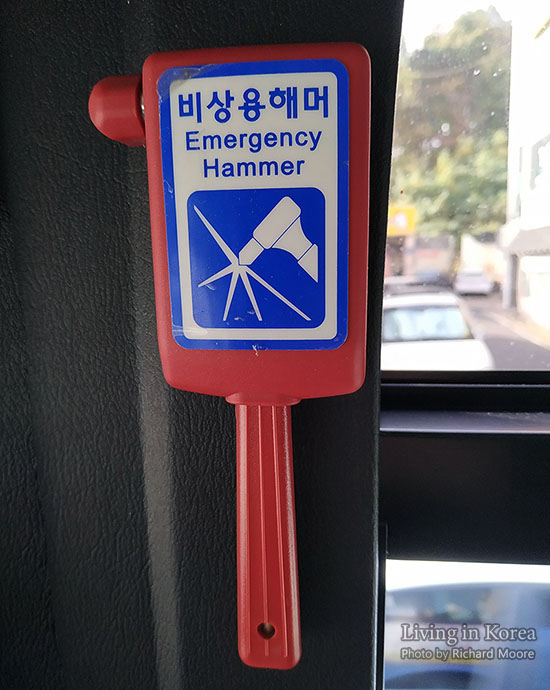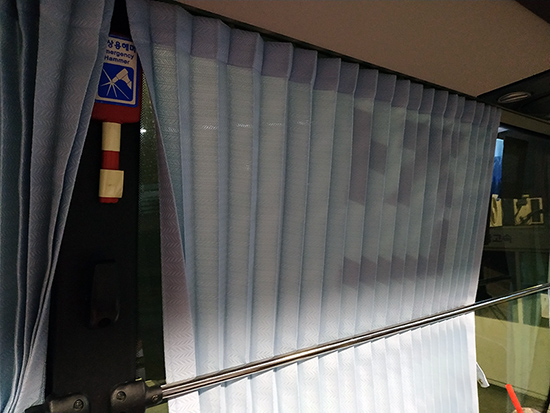Some intercity and express buses play a video when departure begins. This video thanks the riders for choosing this company, explains some of the details of the bus, and can also mention what to do in an emergency. Unlike the contents written for emergencies in a subway car, a subway station, and city buses, this will be relatively shorter. If you are in a bus terminal and there is a heart attack, you might be able to locate a defibrillator.
If you are in a bus and an emergency occurs which makes it difficult to escape the vehicle, you may need to exit through a window. Emergency hammers (비상용해머, 非常用 hammer, bisangyong haemeo - or – 비상탈출망치, 非常脫出망치, bisang talchul mangchi). This image was actually taken on a city bus, but this is the same design installed in intercity, express, and city buses. The hammer is held in place by a wall mount and covered by a plastic flap. Lift the flip and remove the hammer.

Emergency hammers are installed around eye level on the pillars that separate windows. If you don’t see one on the pillar in front of you, check the one directly behind you or on the other side of the bus. Unlike some bullet trains which have weak spots designed into windows, the windows of buses are more uniform which means there is no preferred location on the glass to be hit with a hammer. Pick your location and swing the hammer. Be prepared to kick to push out the broken safety glass.

Compared to other classes of buses, premium buses come with additional safety features, including a lane departure warning system (LDWS), an advanced emergency braking system (A-EBS) and the interior is also made of flame retardant material.